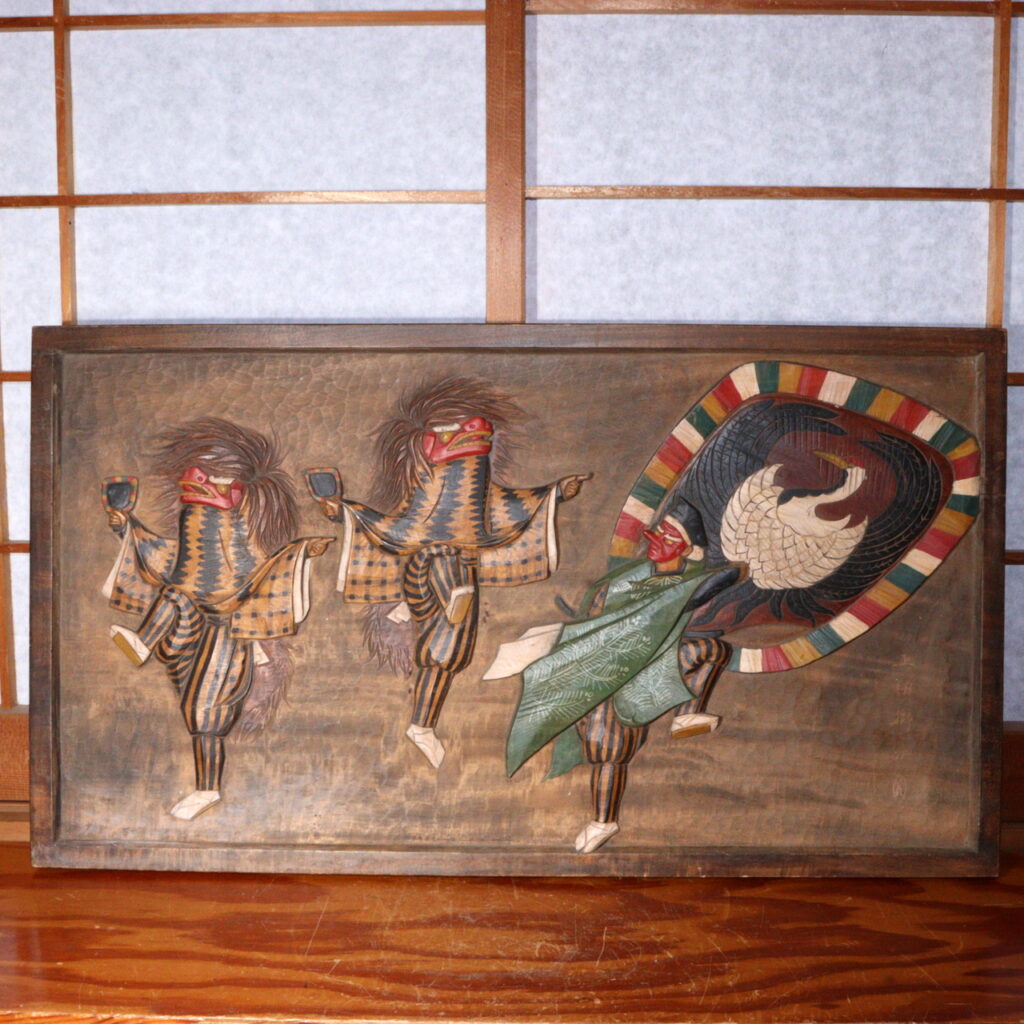
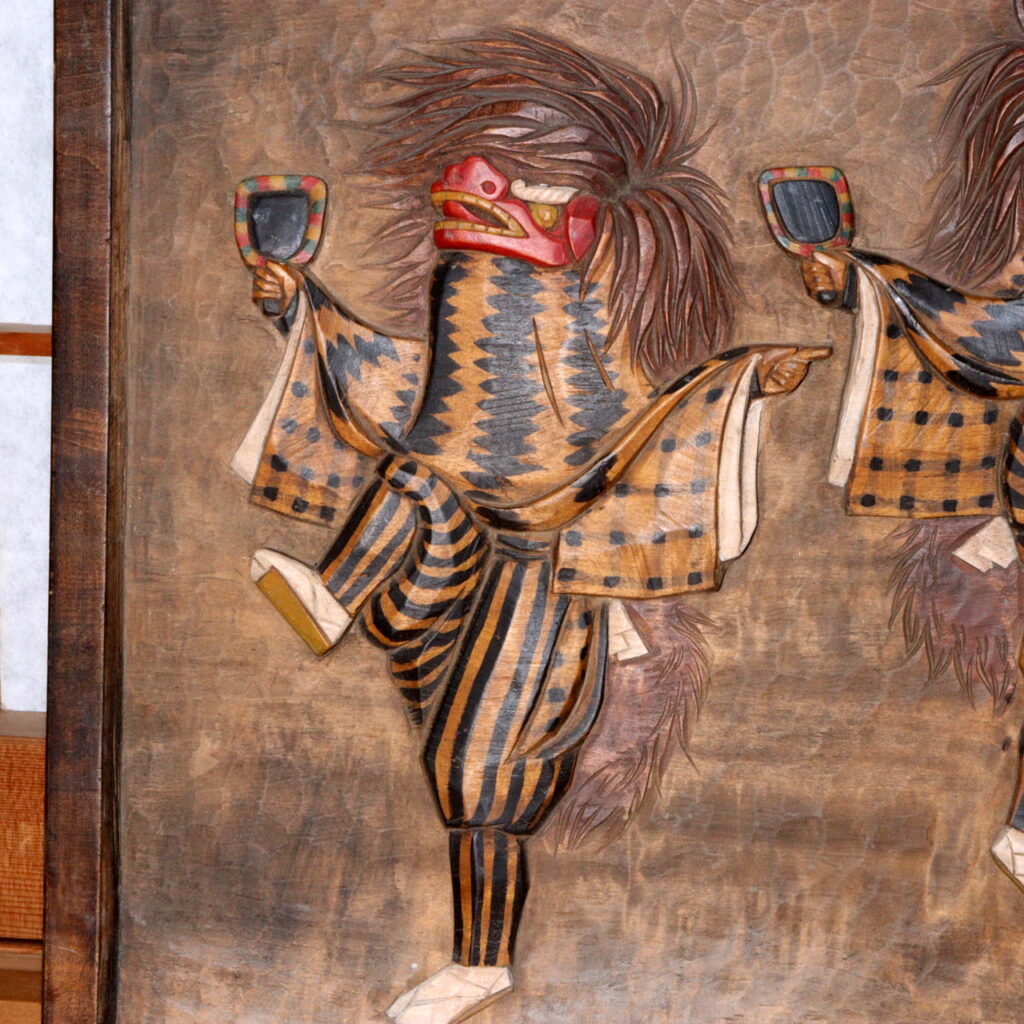

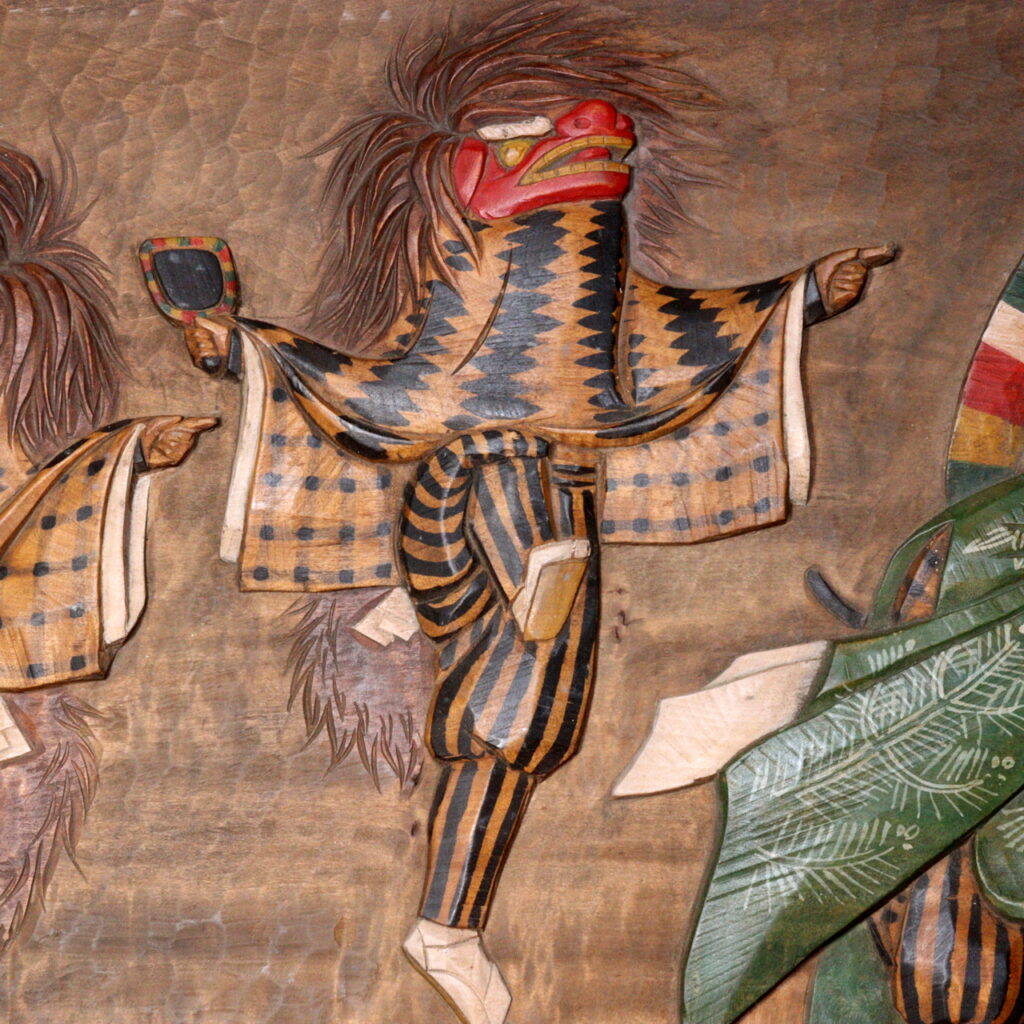
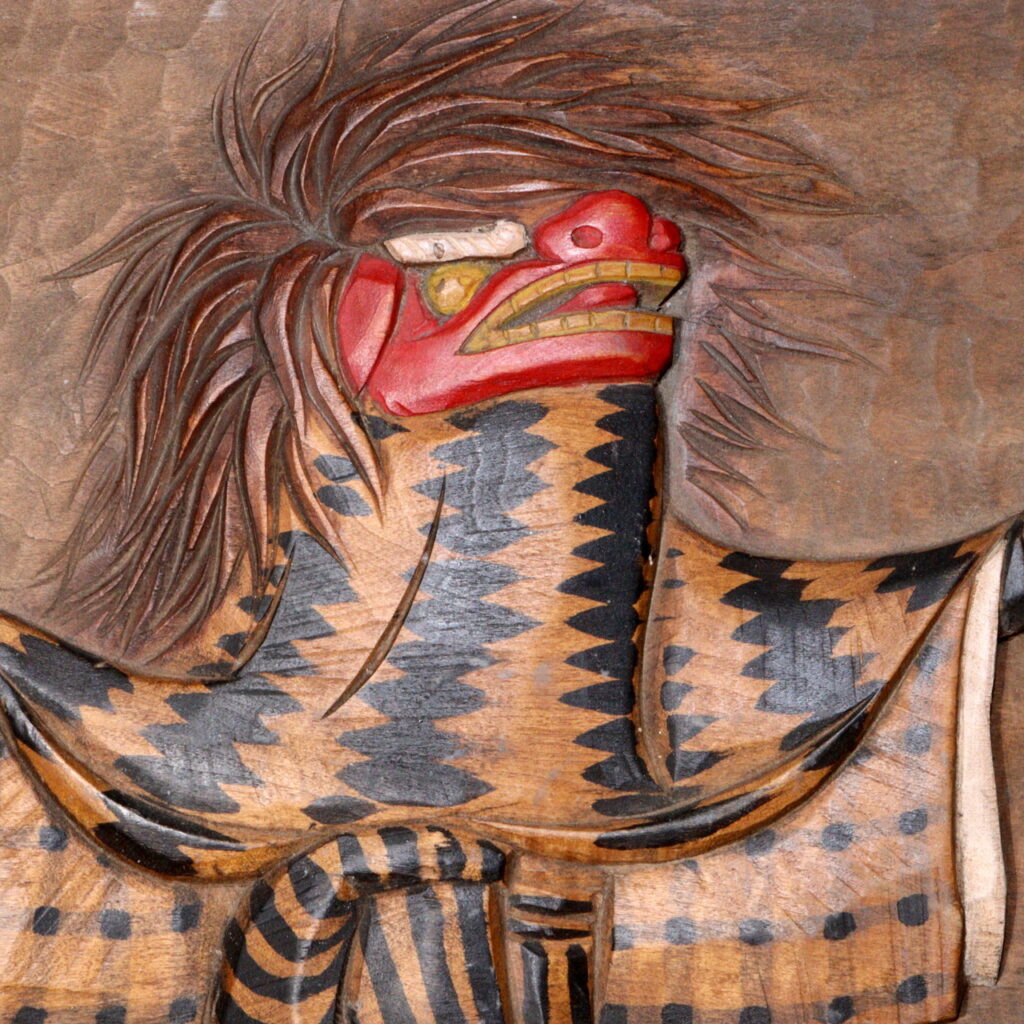
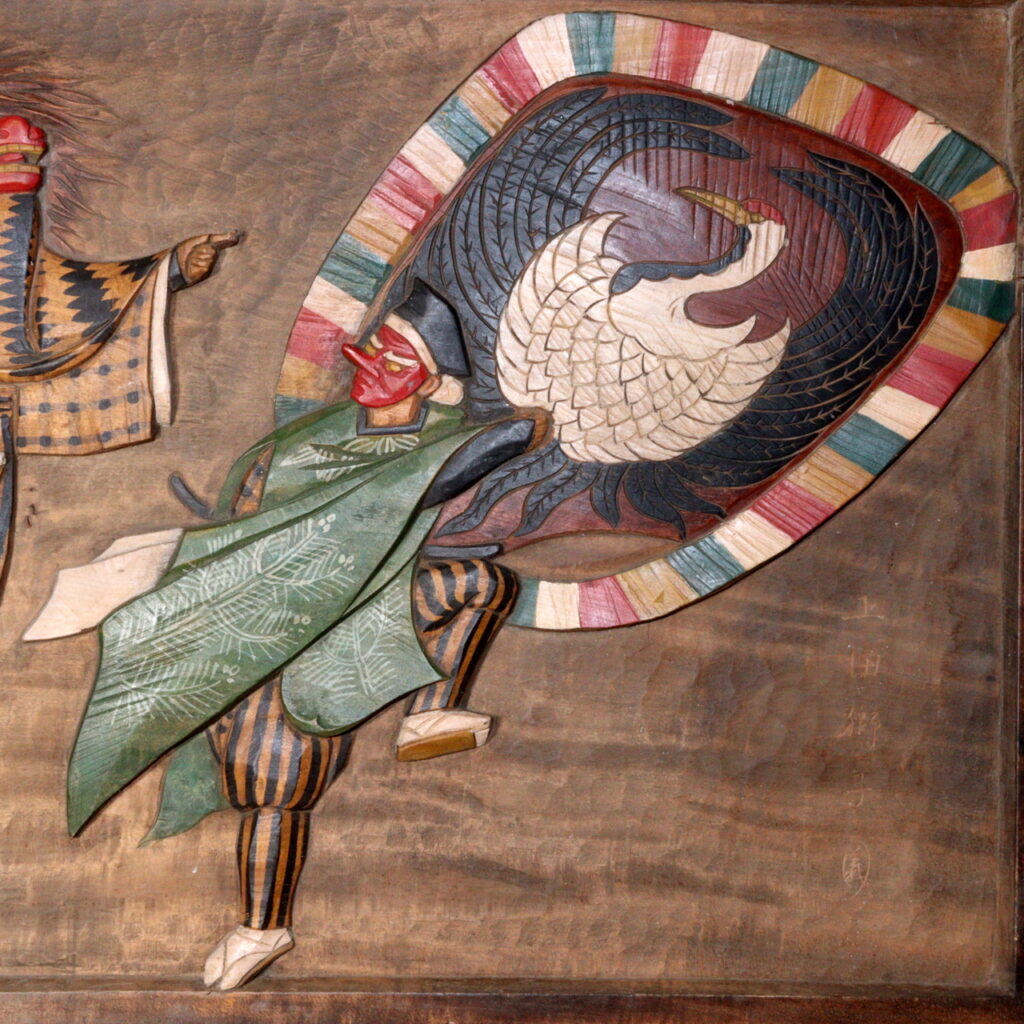
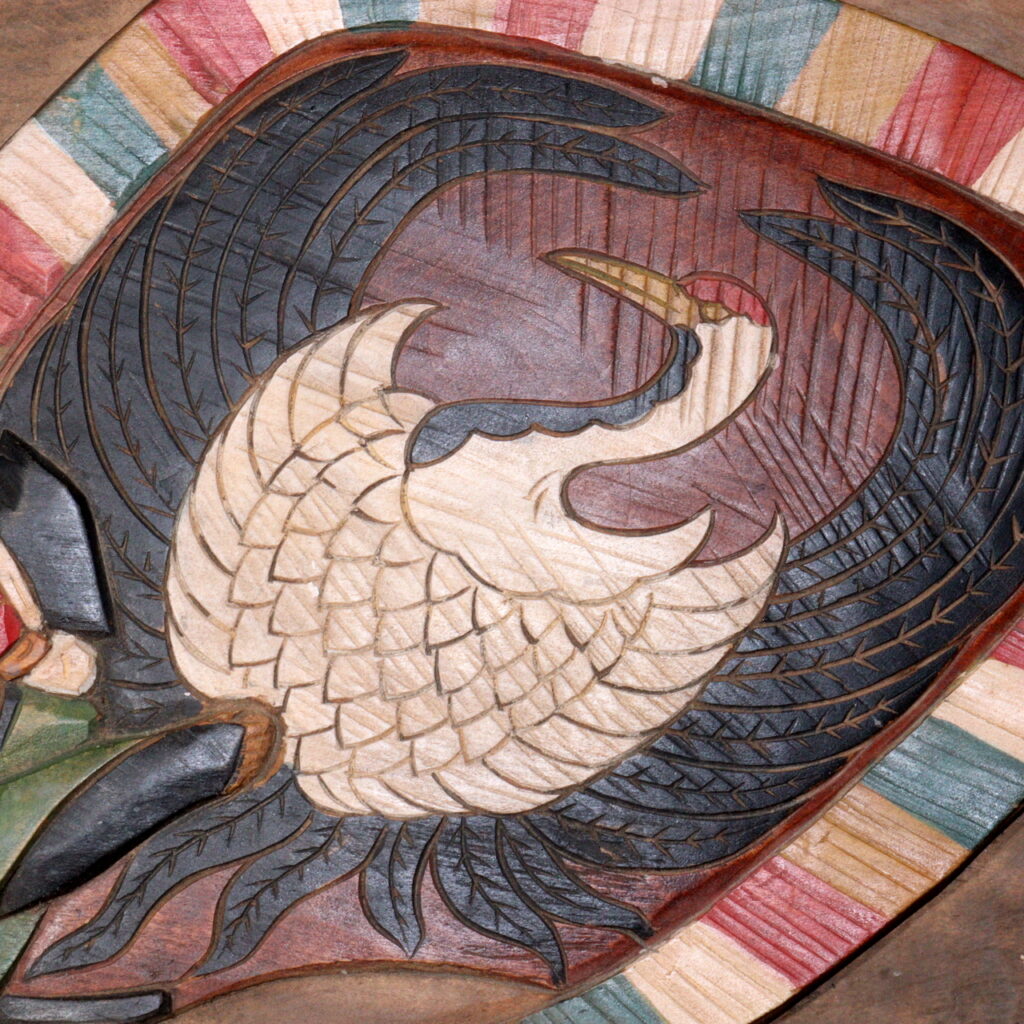
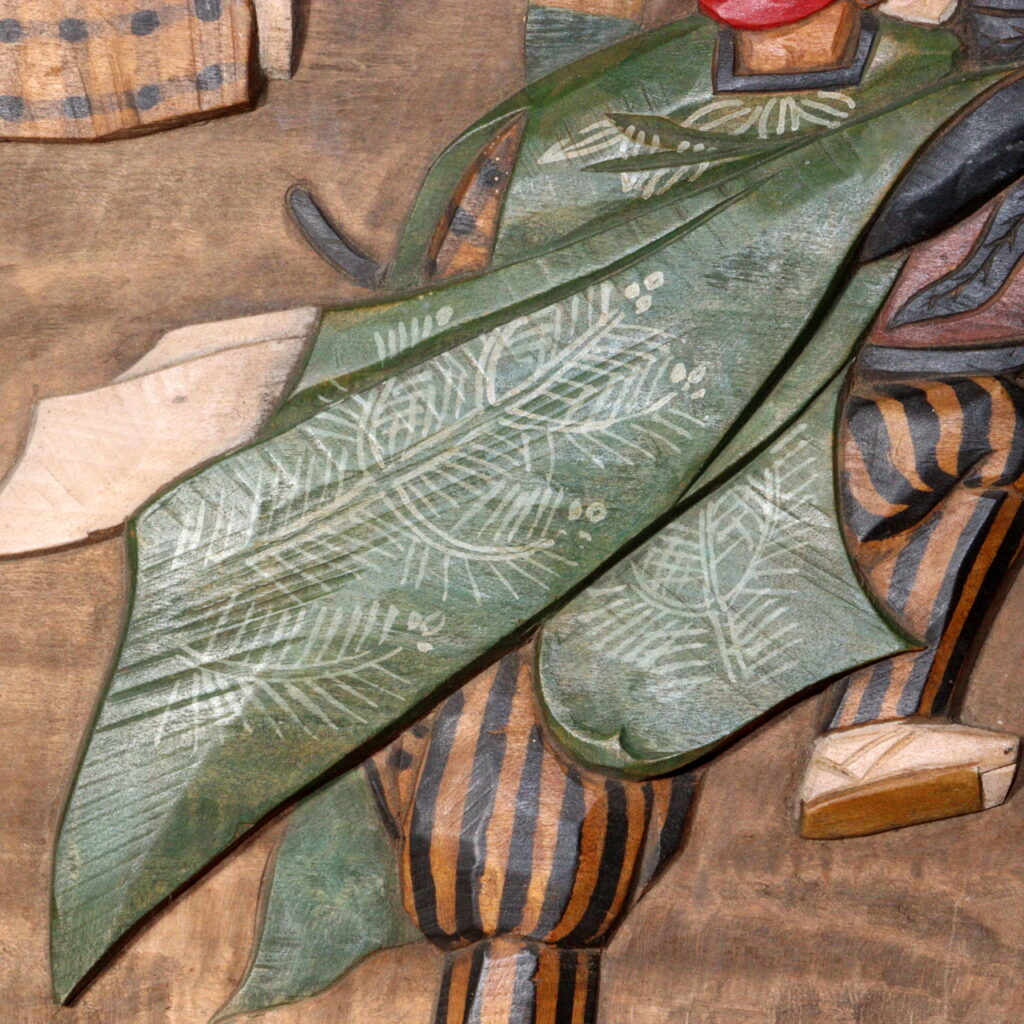
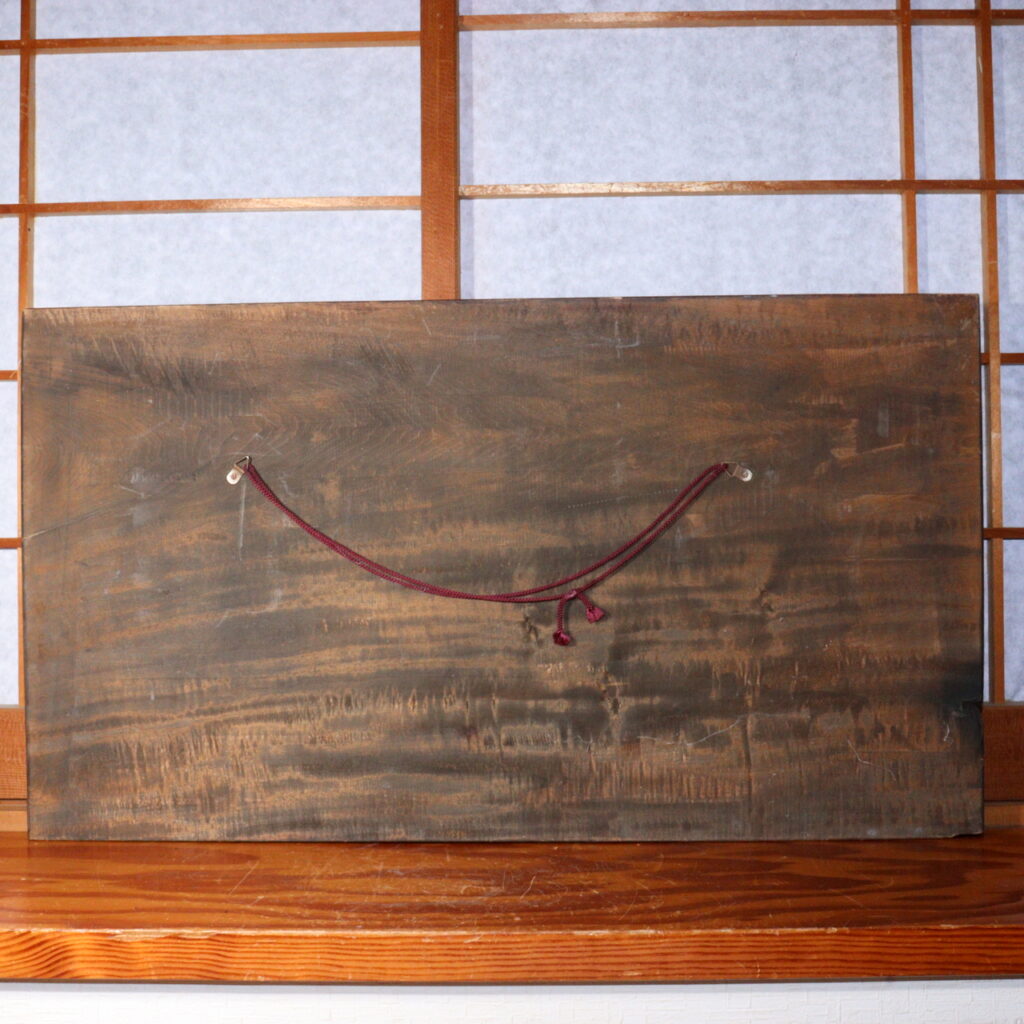
A rare expression of Japan’s dynamic festival spirit through the art of wood carving
Among the many treasures of Japanese antiques, few capture the vigor and joy of local culture as vividly as the Ueda Shishi (Lion Dance) carvings. This exceptional wooden wall hanging, meticulously sculpted by a skilled craftsman, embodies the powerful rhythm and grace of the lion dancers (shishimai) from Japan’s traditional performing arts.
It stands not merely as decoration but as a living story of Japan’s deep connection between art, craftsmanship, and community celebration.
The Story Behind This Piece
The Ueda Shishi, or Ueda Lion Dance, originates from Japan’s long tradition of Shishimai—a ceremonial performance believed to ward off evil spirits and bring prosperity. The lion, a symbol of protection and good fortune, dances with expressive movements that blend elegance with strength.
This performance style became especially prominent in Edo-period Japan, when local festivals (matsuri) flourished as expressions of regional identity and faith.
This wall carving depicts the Ueda-style lion dancers alongside a majestic eagle — a symbol of courage and divine power. The combination of these two creatures evokes both movement and protection, portraying a vivid moment of cultural vitality.
Such carvings were often commissioned for temples, shrines, or traditional homes to celebrate craftsmanship and spiritual protection, reflecting Japan’s unique blend of Shinto beliefs and artistic expression.
The Beauty and Craftsmanship
Carved from solid wood, this Ueda Shishi wall hanging exemplifies the precision and sensitivity of traditional Japanese woodworking (mokuchō bijutsu).
The artisan’s chisel marks breathe life into every fold of the dancers’ robes and the feathers of the soaring eagle, creating a dynamic composition that seems almost in motion.
The deep relief carving (taka-bori) reveals remarkable depth, allowing light and shadow to animate the figures differently throughout the day—a technique often used by Meiji-era craftsmen to achieve emotional realism.
Subtle layers of natural pigments and gold accents further enhance the sense of drama and sacred vitality.
Unlike minimalist Zen carvings, which emphasize serenity and emptiness, Ueda-style carvings celebrate energy and expression, bringing to life the pulse of Japanese folk festivals.
This contrast highlights how regional craftsmanship across Japan embraced distinct aesthetics—from the quiet introspection of Kyoto temples to the vibrant storytelling of rural artisans.
Its Value for Collectors Worldwide
For collectors of Japanese folk art and wood carvings, this piece represents the pinnacle of traditional narrative sculpture.
Its cultural and artistic significance extends beyond decoration—it captures a piece of living history, linking the visual arts with Japan’s spiritual and festive life.
In the modern era, such carvings are admired not only as antique treasures but as statements of cultural continuity. They bridge centuries of craftsmanship, offering warmth and presence in contemporary interiors—from minimalist tea rooms to modern art galleries.
As an investment, this wall hanging embodies the enduring principles of Japanese craftsmanship: respect for material, mastery of hand-carving, and the harmony of energy and balance. It’s a timeless conversation piece—one that continues to inspire collectors, designers, and scholars alike.
Conclusion and Product Link
This Ueda Shishi wooden wall hanging stands as a rare artifact that unites artistry, spirituality, and the celebration of life itself.
It invites viewers to experience the energy of Japan’s lion dance and the devotion of the artisans who brought it to form.
You can view this piece here:
👉 Koedo Sun Art – Product Page
If this item has already found its new home, please explore our other Japanese antique collections here:
🔗 https://koedo-sun-art.com
Category: Item Stories / Japanese Folk Art & Wood Carvings / Handcrafted Traditions
Tags: Japanese antiques, wood carving, Ueda Shishi, folk art, lion dance, Meiji, craftsmanship, Shinto, traditional Japanese design, cultural heritage, wabi-sabi, Edo period art